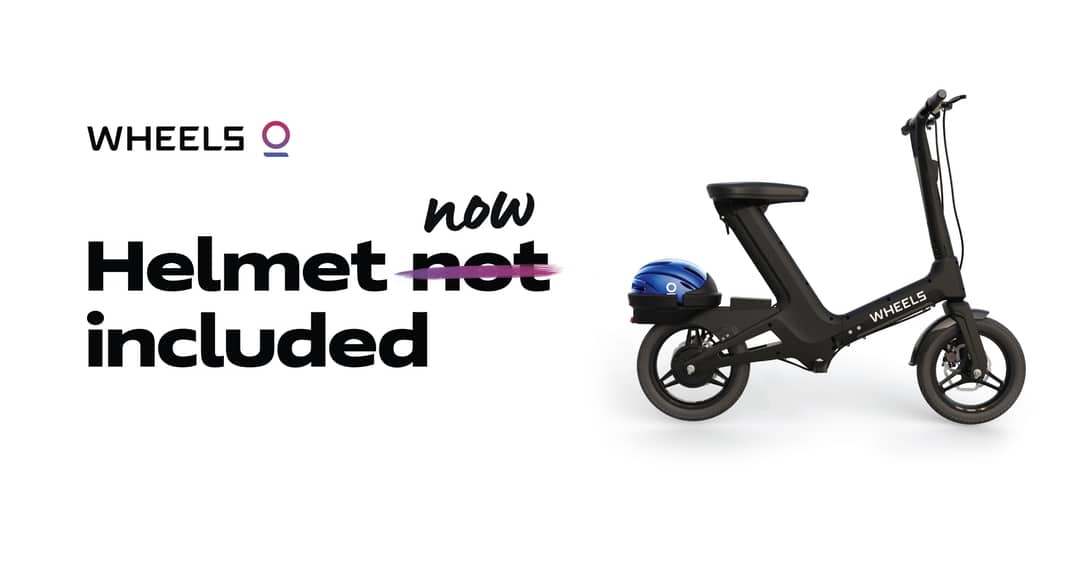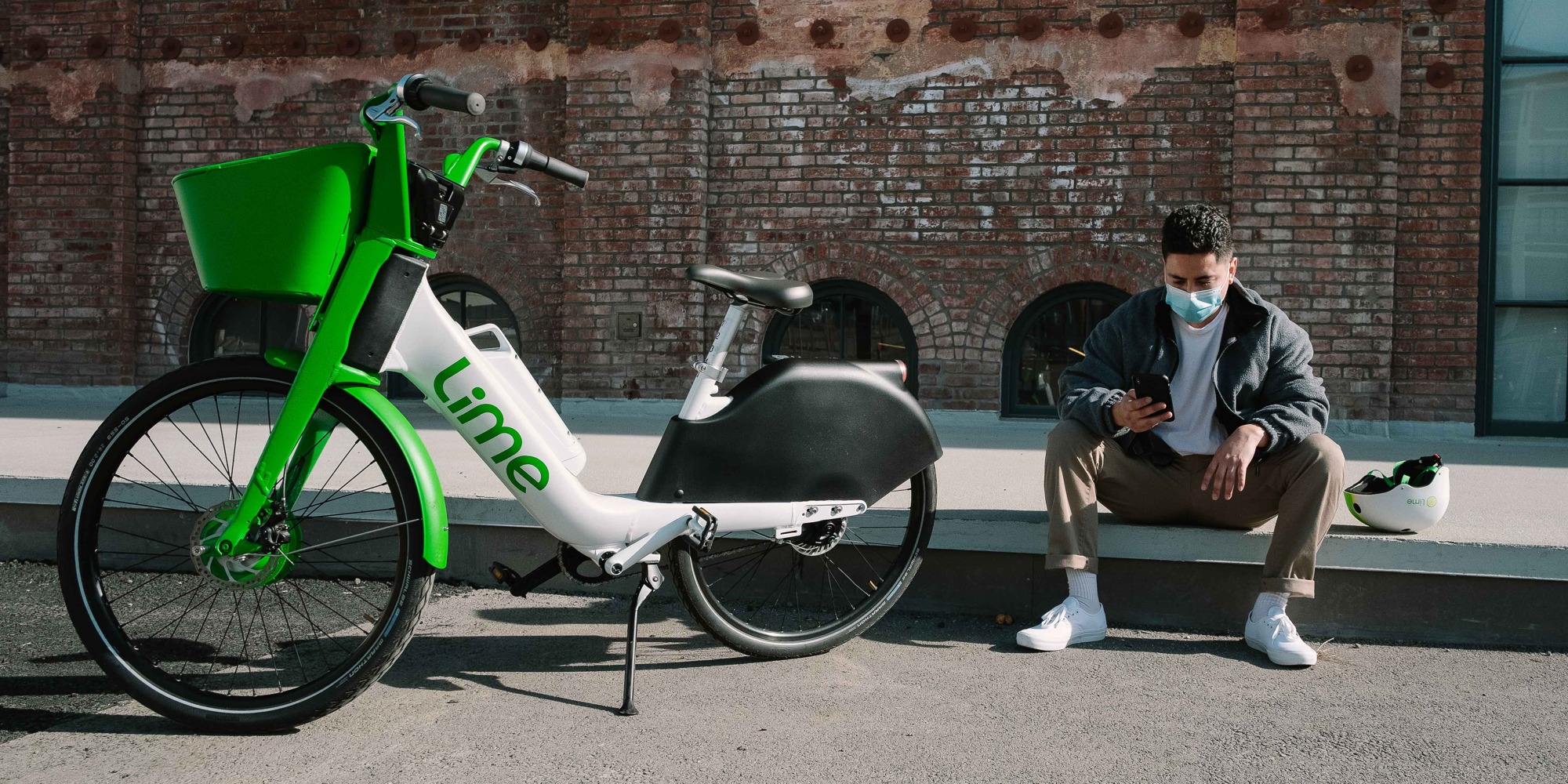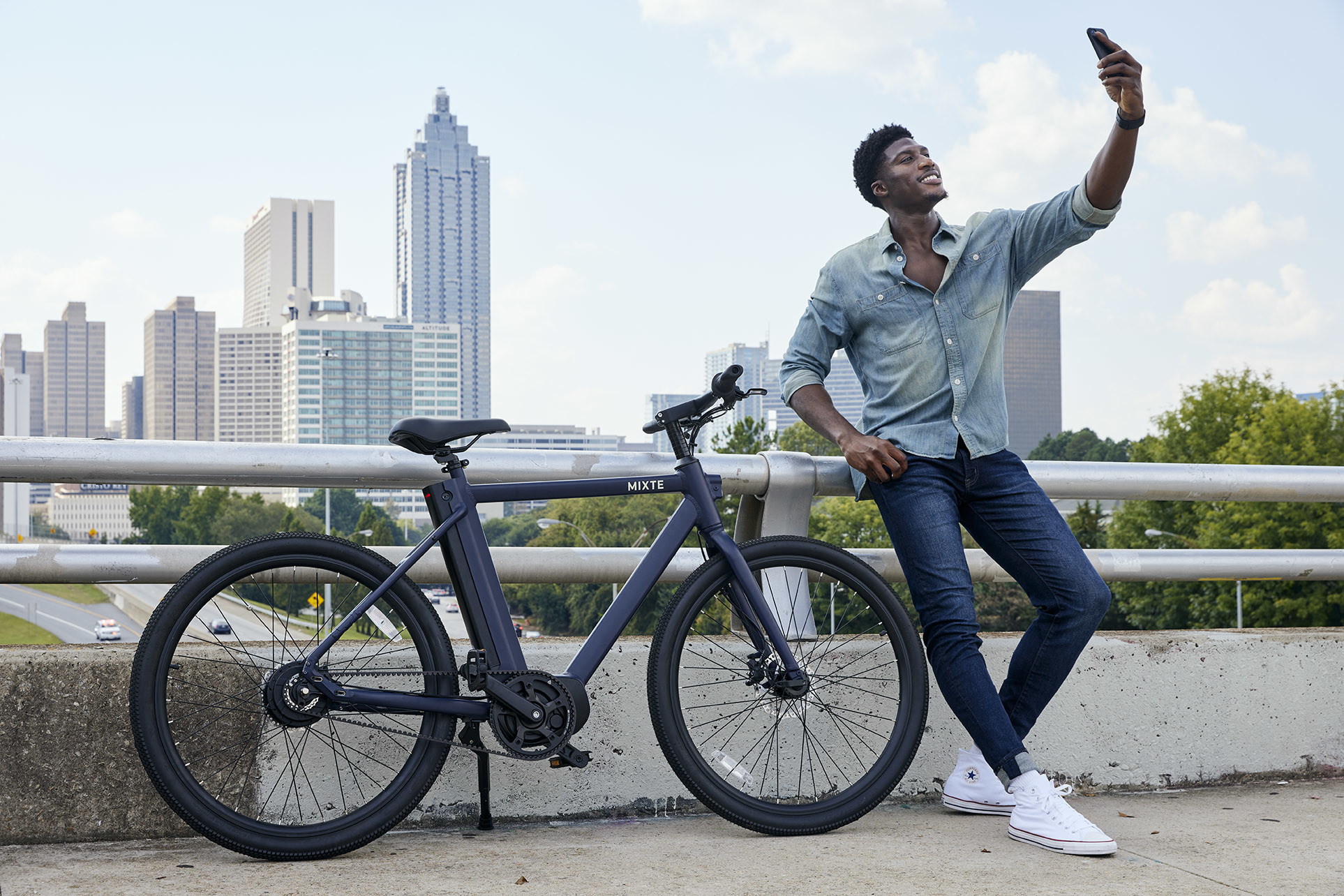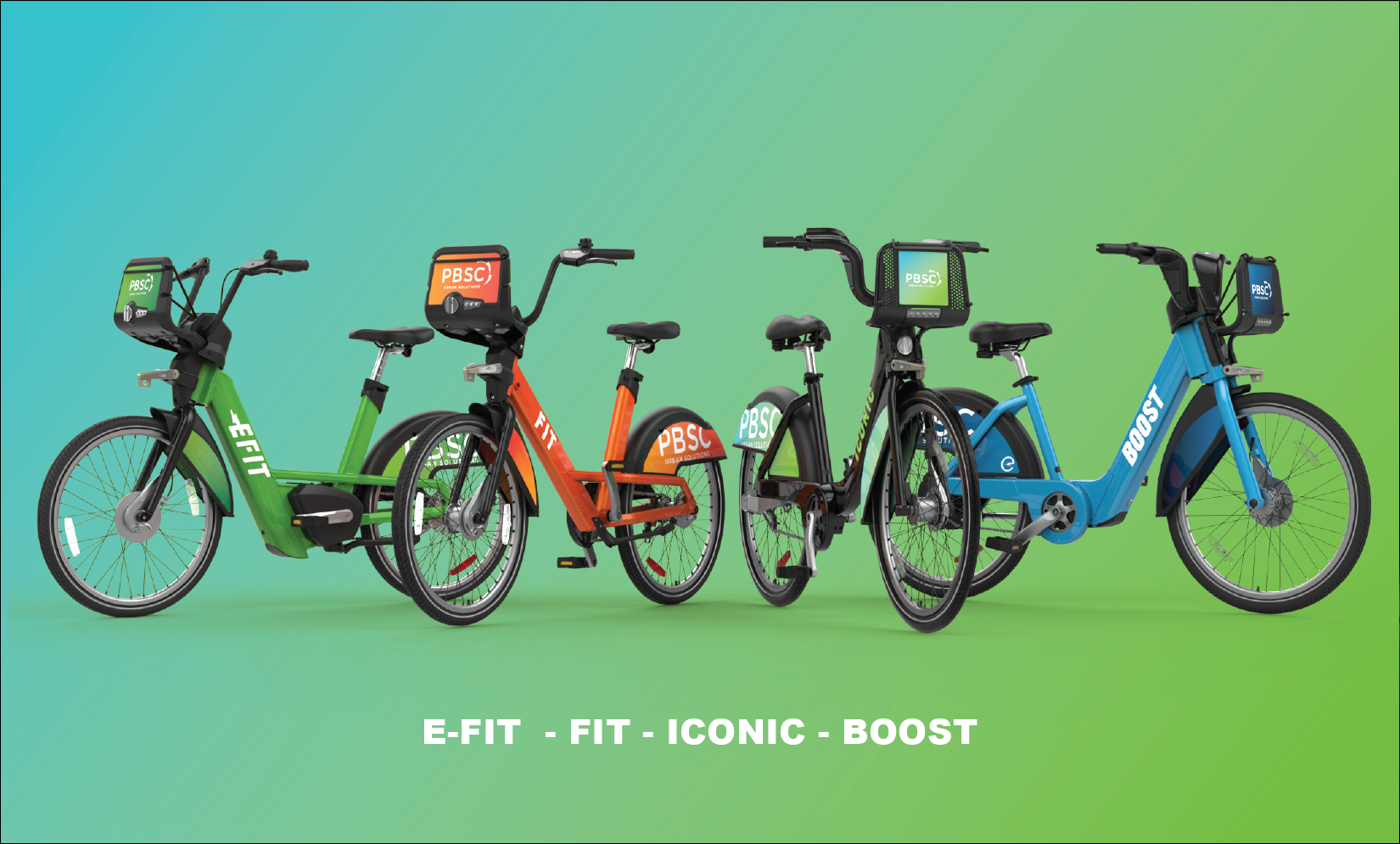We started Wheels in order to offer a meaningfully safer option in the micromobility space – not just to create another scooter or e-bike company. While our device provides all the benefits that micromobility has to offer, from making transportation more sustainable and accessible to reducing traffic, our approach to safety actually addresses some of the biggest problems in the industry. That’s why from the beginning, our form factor has been completely different – with bigger wheels, a lower center of gravity, and a seat for more points of contact with the rider.
Today, we’re introducing a completely new safety initiative that has the potential to significantly advance the industry – we’re outfitting our bikes with a shareable and smart helmet that lives on the bike and is free for riders to use, with a biodegradable headliner that can be peeled off before each use.
Here’s more about how and why we developed our helmet, and why we see it as a non- negotiable offering for the entire micromobility industry:
Riding a scooter or bike without a helmet is… not good
According to a recent UCLA study, out of 249 emergency room patients admitted with injuries from electric scooter accidents in California, the most common types of injuries were head injuries that occurred without a helmet. Similarly, a Centers for Disease Control and Prevention (CDC) study conducted in Austin, Texas found that of the 190 riders admitted with injuries from e-scooters, almost half had head injuries, and 15% had traumatic brain injuries. However, what we found the most staggering was that only one rider out of 190 (0.5%) was wearing a helmet.
A study published in the Journal of Oral and Maxillofacial Surgery found a link between the increase in head injuries and the rise in e-scooter usage, and found that such injuries “could be significantly reduced by the wearing of a protective helmet.”
Science has long told us that wearing a helmet is the best defense against head injuries. The NTSB says that wearing a helmet reduces the likelihood of head injuries for cyclists by 48%, and serious head injuries by 60%. Those are pretty good odds.
It’s simply not practical for riders to carry their own helmets around with them
In just the first few years of having shared mobility programs in our cities, one trend is already clear: riders don’t carry helmets around with them. E-bikes and scooters are designed to offer convenience for distances when walking would be too far and driving would be unnecessary. But wearing a helmet requires that you carry one around, and while you can ditch the scooter or bike at your destination, what do you do with your helmet?
Last month, the e-scooter company Bird announced that they had given away nearly 75,000 helmets in 18 months – a commendable effort certainly, but according to Bird’s press release, the program “did not result in increased helmet adoption.” Their next solution was to encourage riders to snap selfies of themselves wearing their helmets for incentives – an initiative which we fully applaud but don’t think is enough.
The helmet has to actually be part of the device if riders are going to use it.
A micromobility device without a helmet is a car without a seatbelt
It has been over 50 years since the United States first required cars to be manufactured with seat belts. This is now such an obvious safety requirement that no one even thinks about it. Car companies don’t hand out seat belts to car owners suggesting the driver and passengers bring it with them every time they ride in a car. A car comes with seat belts, period.
We believe the same logic certainly applies to helmets for a scooter or bike that shares the road with cars. Simply stated, a micromobility device is only complete if it includes a helmet.
Our helmet is shareable, smart, and it lives on our bikes
Wheels is committed to providing a free helmet to every rider, removing the hassle of having to remember to bring it or keep it with you once you’ve reached your destination.
The Wheels helmet locks into the rear fender of the bike, and riders will be able to unlock it for free via the app at the time of their ride. Once unlocked, the rider can adjust the fit and peel off a biodegradable headliner for a ready-to-use helmet.
Sensors in the bike recognize when the helmet is being used. For our initial rollout, we will be offering riders a 20% discount for unlocking and using the helmet that comes with their bike.
When the ride is over, the bike can detect that the helmet was returned, and the rider can leave the helmet and the bike right there on the curb.
It’s also sustainable
In keeping with our goal of sustainability, we’ve leveraged our own swappable parts model to add our helmet to existing bikes without requiring an entirely new device. The helmet can be added to all of our current bikes with a simple retrofit to the rear fender – no throwaway batteries, motors, or bikes. As we continue to innovate and evolve our products, we will continue to look for ways to reuse as much of our bike as possible, and recycle any and all elements that we can’t repurpose.
Those who care about safety are supportive
As we work to expand Wheels to more cities, we hope that city leaders and regulators will appreciate our helmet offering just as we hope our riders will. Here are just a few things we’ve heard so far about our helmet system from those who care about safety:
“Very few people carry a helmet around with them every time they leave their home, but many risk a severe brain injury by hopping onto a fast-moving micromobility vehicle. Integrating a helmet onto the devices sends a strong message, gives riders an opportunity to protect themselves, and sets an example for all other companies in this space.”
— Dr. Tarak K. Trivedi, MD, MS, Emergency Department Physician and Clinical Instructor, David Geffen School of Medicine at UCLA
“As an emergency physician, we know the most common cause of severe traumatic injury and death is head injury. The data is also clear that micromobility has led to a notable spike in this kind of injury, and that very few are currently wearing helmets when on these devices. It’s great to see a company taking a step in the right direction, addressing the helmet issue. The industry needs to continue to take steps like these to ensure that a whole new generation of riders are protecting themselves from head injury.”
— Dr. Ryan Stanton, board-certified emergency medicine physician and spokesperson for the American College of Emergency Physicians, which launched a scooter safety campaign earlier this year
“Helmets are critically important when it comes to preventing bike and scooter injuries, yet data shows that far too few people are using them. It’s great to see Wheels giving riders an option to have seamless and free helmet access with every ride.”
— Los Angeles City Councilmember Joe Buscaino
Sharing our message
To educate riders about the new helmet and the importance of safety in micromobility, we’re kicking off a “Helmets Now Included” safety campaign, starting with billboards going up today throughout Los Angeles, where we’re starting the phased rollout of our integrated helmet systems.
We hope that riders recognize that a helmet can save their lives. When one is offered to you for free without requiring you to carry one around, using it is a no-brainer.



